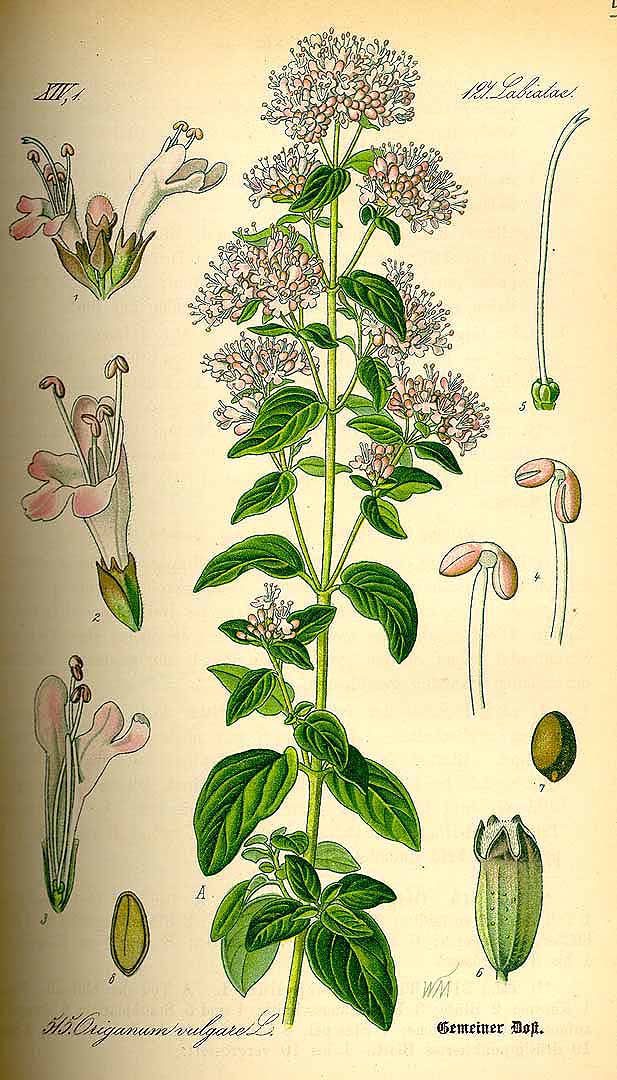! Nouveau site ici !
Vita > Plantae > Magnoliophyta > Magnoliopsida > Lamiales >
Lamiaceae > Origanum
Origanum vulgare
(Origan)


 | **** - ***
| **** - ***
Vita > Plantae > Magnoliophyta > Magnoliopsida > Lamiales >
Lamiaceae > Origanum
Origanum vulgare
(Origan)

Une plante rampante. C'est un buisson feuillu aux racines rampantes. Il atteint environ 1 m de haut. Il a de petites feuilles vert foncé et des tiges rouge-brun. Les feuilles mesurent 1 à 3 cm de long sur 0,5... (traduction automatique)
→suite
⬀
Le  donne accès au menu
donne accès au menu (c'est votre point de repère) 😊 ;
En dessous vous avez la classification, à partir de la vie (Vita, premier rang) jusqu'à la classe au dessus de la plante, dont vous trouvez ensuite le nom scientifique/botanique (latin) puis le nom commun (français), le cas échéant ;
C'est aussi un lien vers la fiche complète (tout comme la ✖, en bas à droite, et le +, en dessous de la description) ;
Vient alors l'illustration (ou ce qui la remplace, en attendant), la comestibilité :
Et en bas
⬂



![Illustration Origanum vulgare, Par Sturm, J., Sturm, J.W., Deutschlands flora (1798-1855) Deutschl. Fl. vol. 20 (1845) t. 16], via plantillustrations Illustration Origanum vulgare, Par Sturm, J., Sturm, J.W., Deutschlands flora (1798-1855) Deutschl. Fl. vol. 20 (1845) t. 16], via plantillustrations](../inc/images/illustrations/origan3.jpg )
![Illustration Origanum vulgare, Par Sturm, J., Sturm, J.W., Deutschlands flora (1798-1855) Deutschl. Fl. vol. 20 (1845) t. 16], via plantillustrations - Fermer Illustration Origanum vulgare, Par Sturm, J., Sturm, J.W., Deutschlands flora (1798-1855) Deutschl. Fl. vol. 20 (1845) t. 16], via plantillustrations - Fermer](../../inc/images/illustrations/origan3.jpg )






